There are endless social media groups out there, and the vast majority are best ignored. So when someone recommended that I join the Great Lakes Supermoto group and its events, I was skeptical. Then I watched a few videos, curious, and joined the discussion.
The idea is simple: Take all the best parts of riding a motorcycle on a track, then put them in the dryer for 90 minutes. The track is smaller. The bike is smaller. The risk is smaller. The cost is about as small as racing gets. The takeaway? If these people are pretty hard-core about putting adults on children’s motorcycles, it’s for good reason.
Within that Great Lakes group, a smaller set of Michigan riders seemed to be having the most fun on any given weekend. So when a friend offered me a loaner Honda CRF50 and suggested I join the fun, I took him up on it. That first event changed my perspective on motorcycling. Between 15-minute rounds of open lapping, I watched as the fast boys cut fast laps and diced it up with real racecraft.
I also took a few minutes to catch up with American Motorcyclist Association (AMA) pro Carl Soltisz. Carl has been racing full-size bikes for 12 years and small ones for seven. He currently runs in the MotoAmerica series at tracks across the United States. I asked his thoughts on this whole “adults on tiny motorcycles” thing. Is it really worth doing for anything other than fun, I wondered?
A survey of what I learned is below. The short answer? Fun isn’t the whole point. But if that’s all you show up for, there’s more than enough!
***
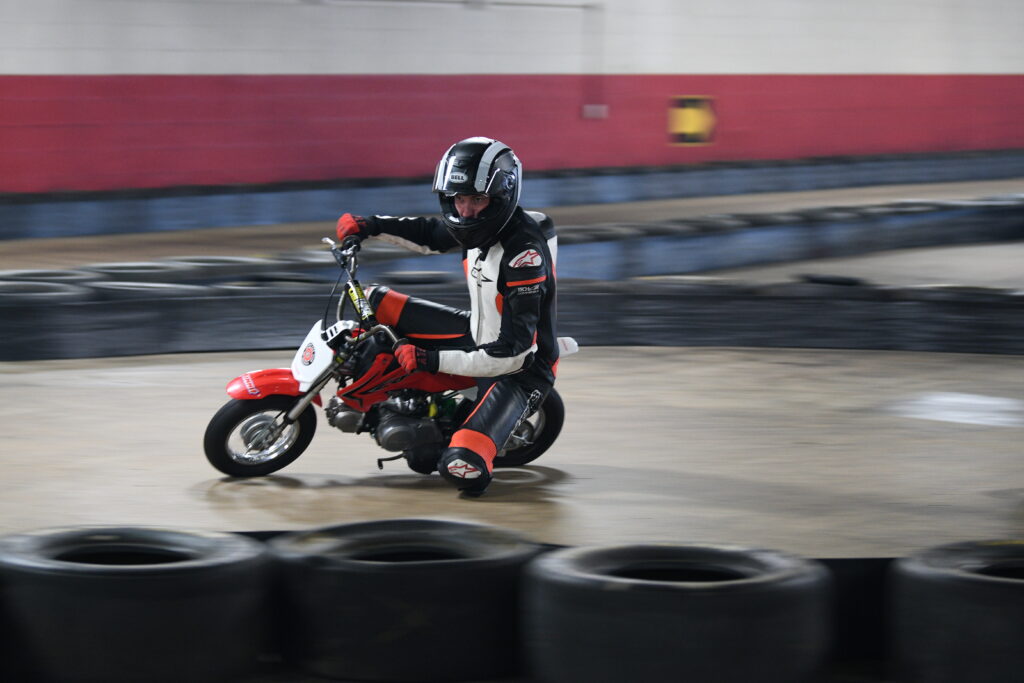
(Jeremy Sargent/Great Lakes Supermoto)
Location, location, location.
Because the group I ran with is based in Michigan, and because the weather here refuses to behave consistently throughout the year, this whole circus takes place indoors. It also happens only during the winter—Michigan’s summers are short, and in the warmer months, everyone has better things to do.
Naturally, you don’t have to be in Michigan. Other states have similar minimoto groups, but the whole thing hinges on convincing a go-kart track to allow the circus to occupy the facility for a few hours. (Given the insurance and legal requirements, I assume this takes a really strong sales pitch.) Regardless, facilities often look the same: tire walls covered with plastic sheeting, to keep riders and drivers contained on course; a polished concrete track surface; and tight, twisty layouts.
All-out speed isn’t the point, in other words. At the same time, everyone is trying to go faster.
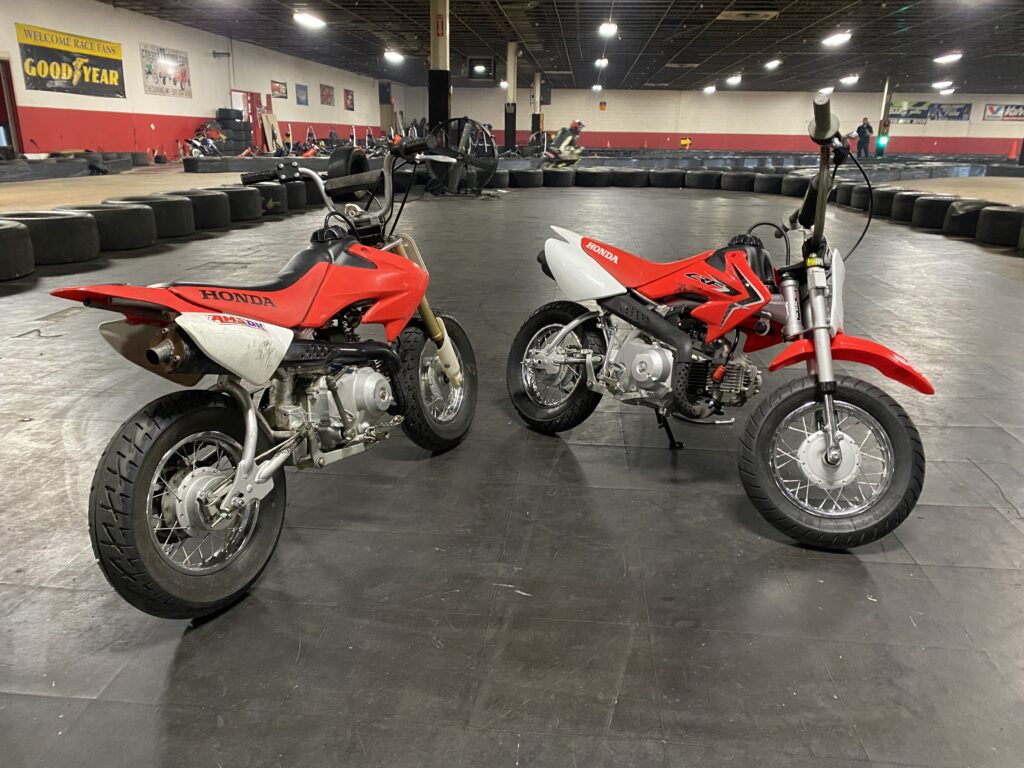
The bikes are selected and upgraded to reflect the track’s constraints.
With the Great Lakes Supermoto (GLS) group, that means the Honda XR50 or CRF50. Pint-size dirt bikes meant for kids and powered by an air-cooled, 50cc, four-stroke single. These little beasts ride on 10-inch spoked wheels and wear cable-operated drum brakes. They have three-speed clutchless transmissions and look a lot like a shrunken version of a larger motorcycle.
In fact, if it weren’t for the big, BMX-style handlebars, a photo from the right angle could make these little Hondas pass for a larger bike. At least, without a rider present. Add a person into the mix, you’ll see why the larger handlebars are all but required to put an adult onto a bike this small.
For the GLS crowd, the only other required changes are a set of tires, some safety wire for your oil drain plug and fill port, and a catch can for your carburetor vent. These final points may seem extreme for such small machines and the relatively low speeds reached—a stock CRF50 tops out around 30 mph—but oil or gas on track can be hazardous no matter how fast you’re going.
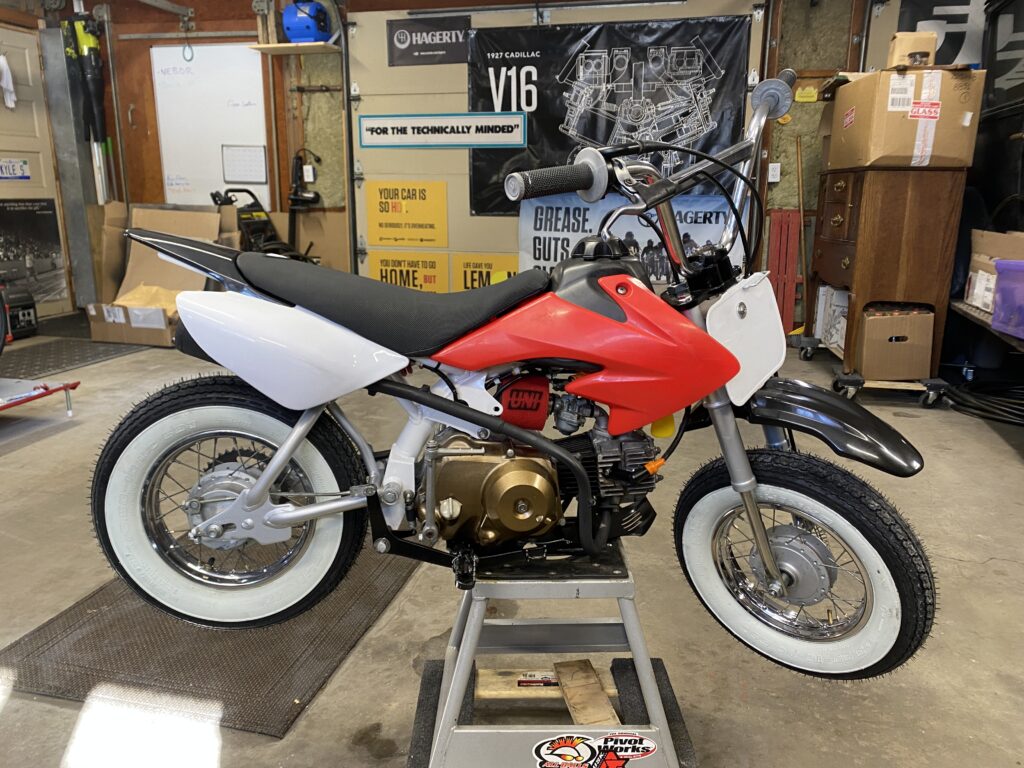
The looks only a mother could love, but the traction is hard to argue with.
Oddly enough, the Shinko SR550 tire is the hot ticket for setup.
This Korean-made scooter tire is surprisingly soft and sticky, especially considering how it was engineered for scooters and comes only in a whitewall construction. It almost seems appropriate for the slightly ridiculous activities at hand.
Sure, there are blackwall tire options, but when I surveyed the paddock for inspiration for building my own CRF50, consensus held the whitewalls as the best tire for polished concrete. Other choices blended in capability on outdoor surfaces, but if you’re looking for the “hot setup” for indoor, the whitewalls are where it’s at. Add some heavier springs to replace the literally child-sized suspension, and ta-da! One of the cheapest track bikes you’ll ever see pass tech inspection.
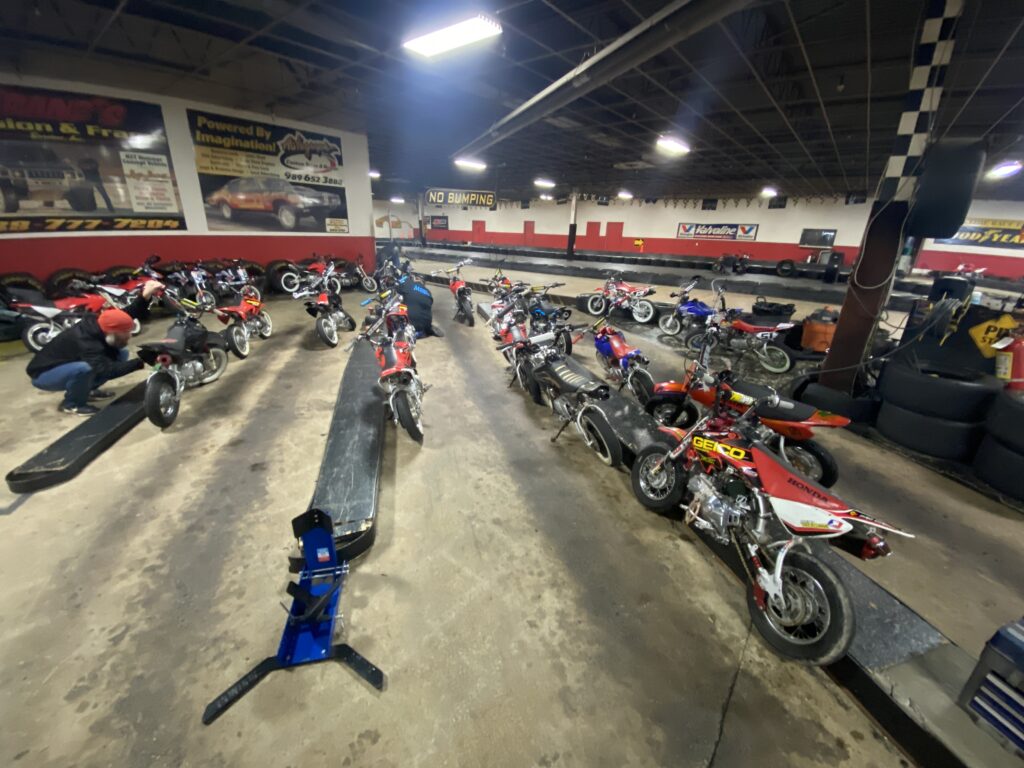
Don’t write off minibikes because they’re small and slow.
Before that Sunday at the indoor kart track, I had never ridden one of these little Hondas. Children’s motorcycles are often used in race paddocks as pit bikes. Because they’re so affordable to own, keep running, and modify, they also often see hard use as play bikes.
In other words, many have been ridden hard and put away wet for years. I had never invested any time or money into buying a bike like this because I saw the breed as a novelty, and not a very entertaining one at that. Then riders like Carl set me straight and showed me what I was missing. They’re a riot.
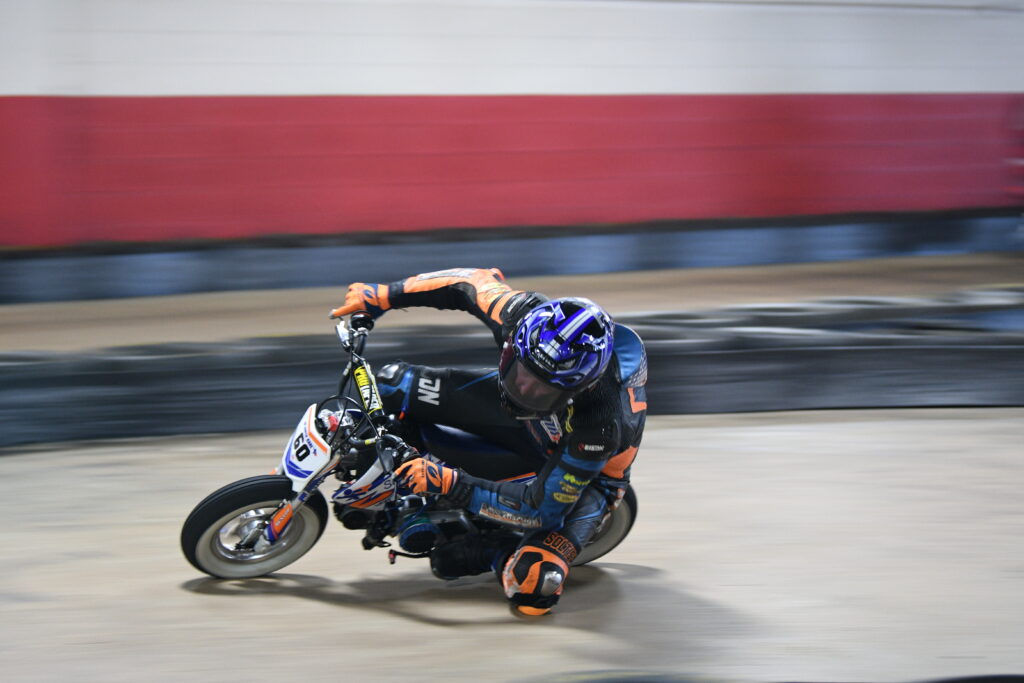
AMA pro racer Carl Soltisz can go fast on just about anything, including this Honda CRF50. (Jeremy Sargent/Great Lakes Supermoto)
“Whether it’s a big bike or little bike, they all share the same basic principles …”
“… and a lot of the skills transfer over.” That’s Carl. He’s not wrong. In fact, because the minis are so much smaller than big bikes, they’re actually less stable. Not least because the smaller wheels give a reduced gyroscopic effect at speed.
We often refer to minis as “twitchy.” And this twitchy-ness, Carl noted, actually helps train your muscle memory and reflexes, for reacting when things go awry.
Yes, things go wrong.
As the old joke tells it, there are two types of motorcycle riders—those who have gone down, and those who will. The idea holds true in racing. You’re extracting as much as possible from the bike, and that means that sometimes, you ask too much.
This brings us to one of the most beautiful parts of minimoto: These bikes crash relatively gently. At least, compared to big bikes. I should know: During my third lapping session, I focused on the track’s fastest corner, a left-hand bend taken wide open in third gear. Then things went a bit … less than ideal.
As with larger bikes, thinking more can make you faster.
Rather than accept my sloth-like pace for one corner of the kart track’s nine-turn layout, I elected to try different things each time through. Change my turn-in point? No difference. Alter my shift point leading up to the turn in hopes of settling the bike down prior to the turn? No change. Then I began making subtle changes to my body position, watching the result of each. The bike got quicker.
Crashing is never fun, but at least the penalties are small.
Remember how I said, just a few lines back, that the bike went quicker? That increase in speed lasted for a lap or two, before the front tire told me I was being greedy and set me to sliding.
I now know how it feels to have my inside knee suddenly weighted, no longer skimming the track surface. What it’s like as the handlebars flop right to the steering lock as you instinctively begin to counter-steer. And I know what goes through my brain as I lay in the middle of the track, working to get my bike off me as traffic comes ripping toward my head, around that last blind corner.
In that moment, I wouldn’t have believed this was a best-case scenario. But it really was. I popped upright, pushed the bike off track, took a second to laugh about it, then went right back out, back to lapping. On a big bike, unless you’re very lucky or very stupid or both, crashes aren’t just brushed off.
Indoor or outdoor, small bike or large, the mental game is the same.
Errors like my crash often happen when we are mentally and physically worn out, like at the end of a race. Carl told me that he uses minimoto to train for the mental focus of a full-size race. He’ll be on the starting line for the grueling Daytona 200 this weekend, an event where riders must be on race pace for more than two hours.
“It can be pretty difficult to maintain a high level of mental focus for that amount of time,” he said. “With minis, I can go ride at 100 percent pace for two hours, and it simulates the mental focus you need on a big bike [for that time] pretty well. Practice opportunities [like that] are plentiful with minimoto but much harder to find on big-bike tracks.”
The lap-to-dollar ratio is unmatched.
We can all agree that more track time is preferable to less. Cost is minimoto’s final selling point, and for me, it’s the one that sunk the hook.
My house has an equal number of big and little tracks within most driving distances. When I’ve run big bikes, track fees and mechanical upkeep have been about a fifth of the spend. Carl felt the same way.
“If cost/time weren’t a factor,” he said, “and I was solely focused on sportbike racing, then only riding sportbikes would be the way to go. There’s no better practice than actually riding the bike you want to race on. I would still ride minimoto though, because they’re super fun. Minis are a great, cost-effective, convenient alternative.”
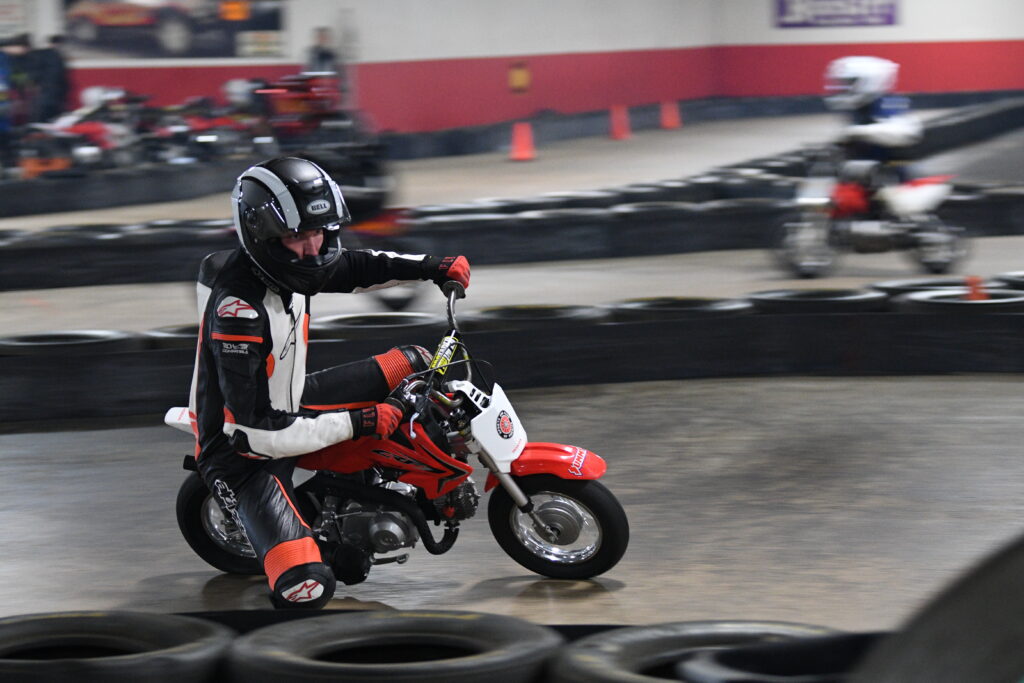
Practice matters.
Almost anything worth doing requires some amount of learning and practice to reach a level of expertise—or even just enjoyment. Riding or racing a motorcycle is more extreme a challenge than most hobbies, just in terms of the landscape. Sitting atop a 45- to 200-horsepower machine going 80 mph while leaned over at 50 degree is basically the normal operating condition. To learn anything in that environment, you have to be comfortable enough to think constantly, not just react, and that’s just the bare minimum.
The idea of a low-consequence, high-fun, affordable option to clock time on that learning curve? Too few people look for it until it’s too late.
***
The idea of 4-hp motorcycles designed for 5 year olds being good for anything more than comedy can be tough to wrap your head around. The proof is in the pudding, though: Next to a big bike, it’s the same skills, the same muscles, and the same pace.
If you want to become a better racer or a faster rider in general, a faster or more powerful bike is the last thing you need. If you can go fast on a 50, you can go fast on just about anything. All the cool kids are doing it. Why aren’t you?
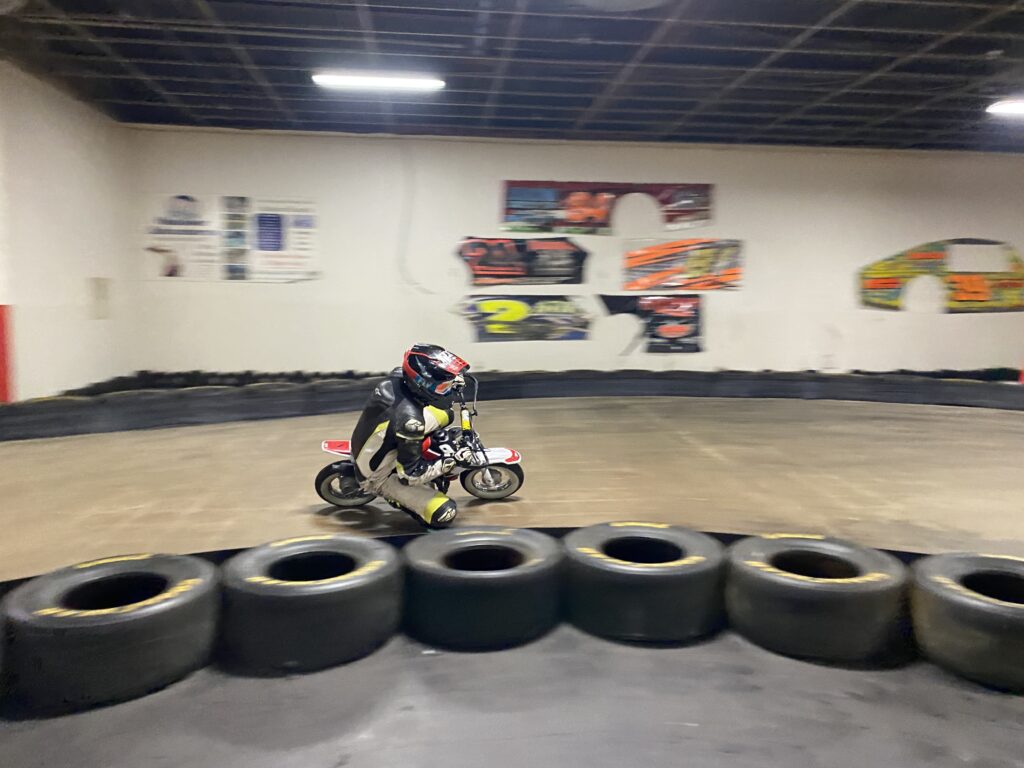
(Kyle Smith)

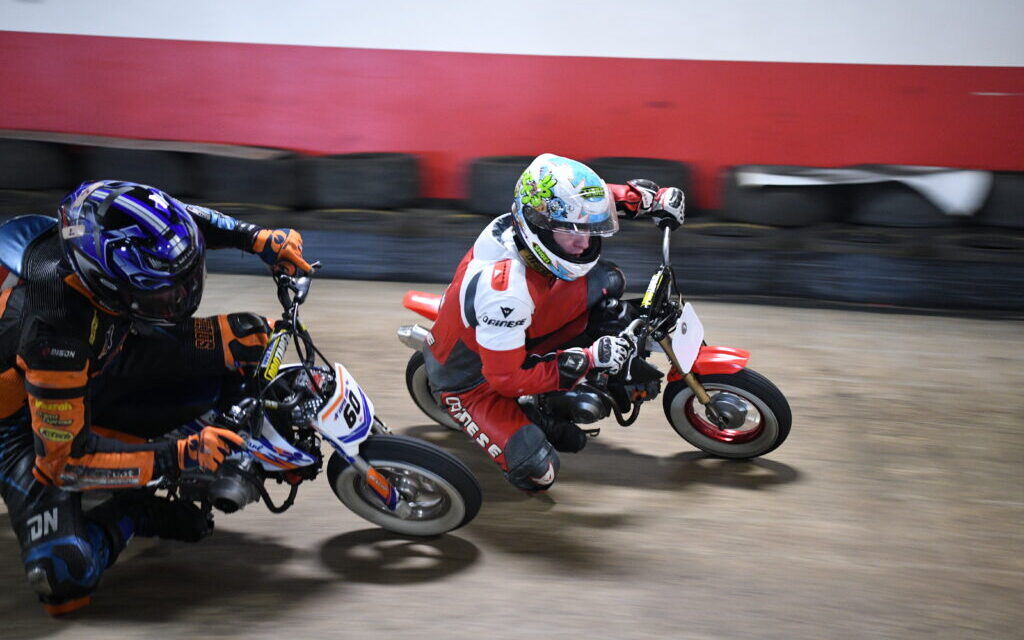
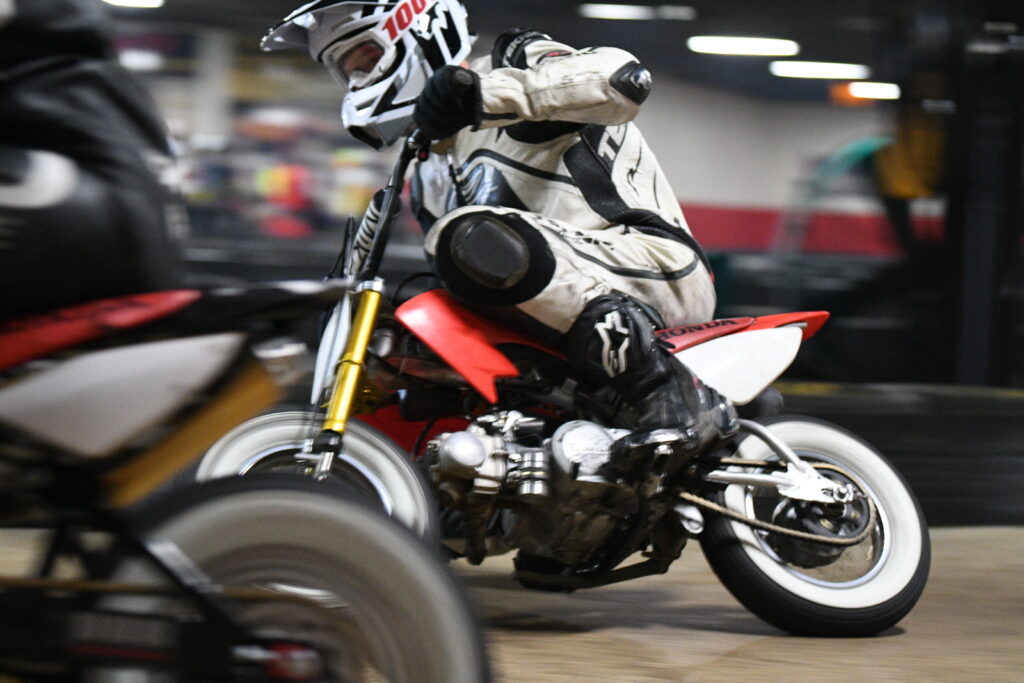

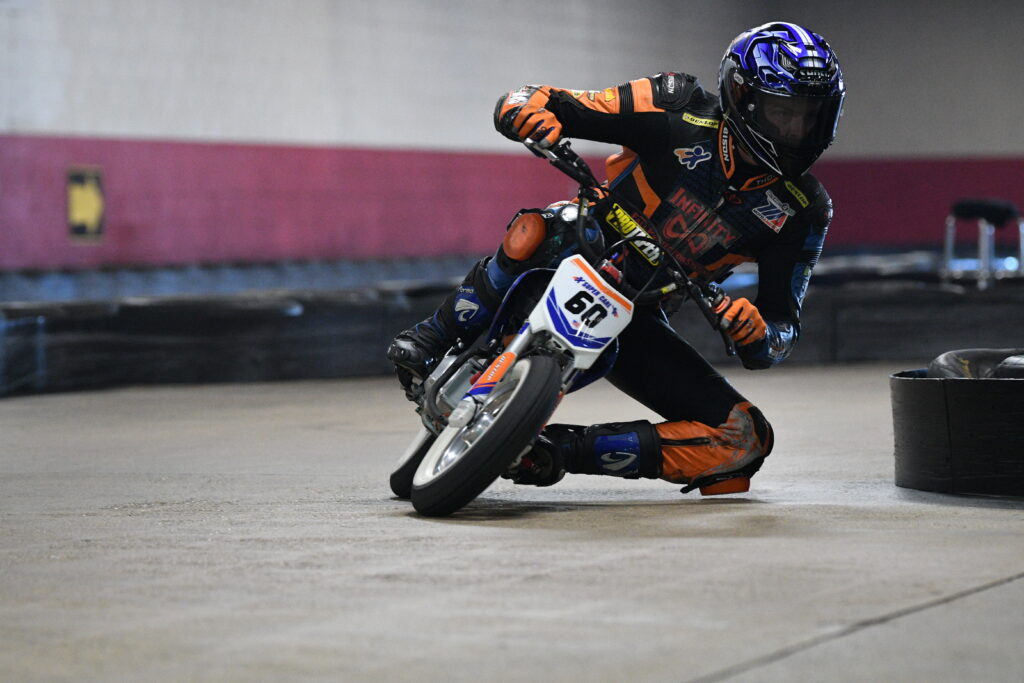

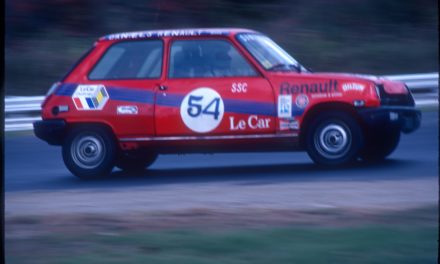

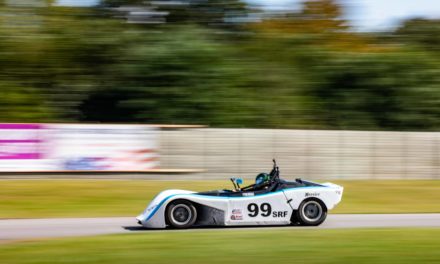
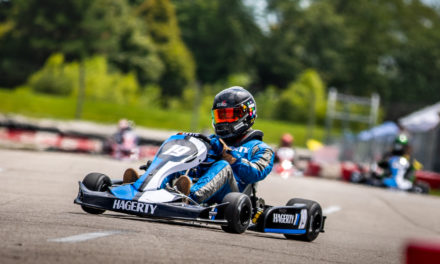





I’ve wanted to do this! I’m in Michigan, too… Does anyone offer arrive-and-ride options?